Complete Solutions to Exercise 6.2 of chapter NEWTON'S LAWS OF MOTION 1 of Class 11 book with complete answers and questions
| Class 11 | PHYSICS |
| Chapter | NEWTON'S LAWS OF MOTION 1 |
| CENGAGE PHYSICS | Exercise 6.2 |
| Number Of Questions | 35 |
| Academic Year | 2023-24 |
As per the diagram given in fig.
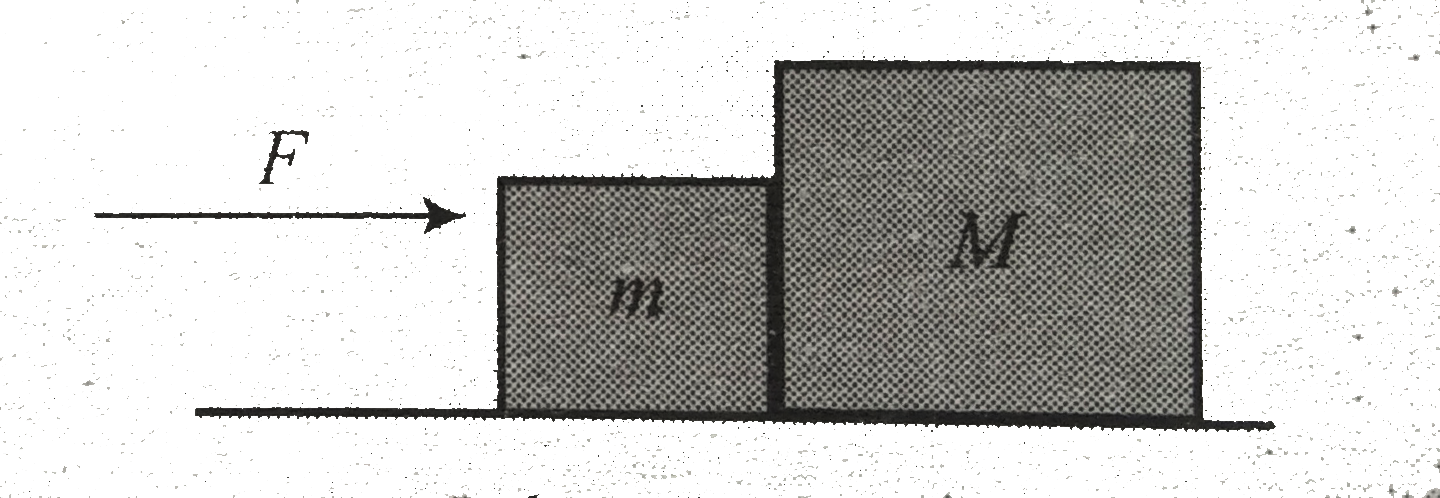
The free-body diagram of M is fig. (correct or incorrect). Assume all surface are frictionless.
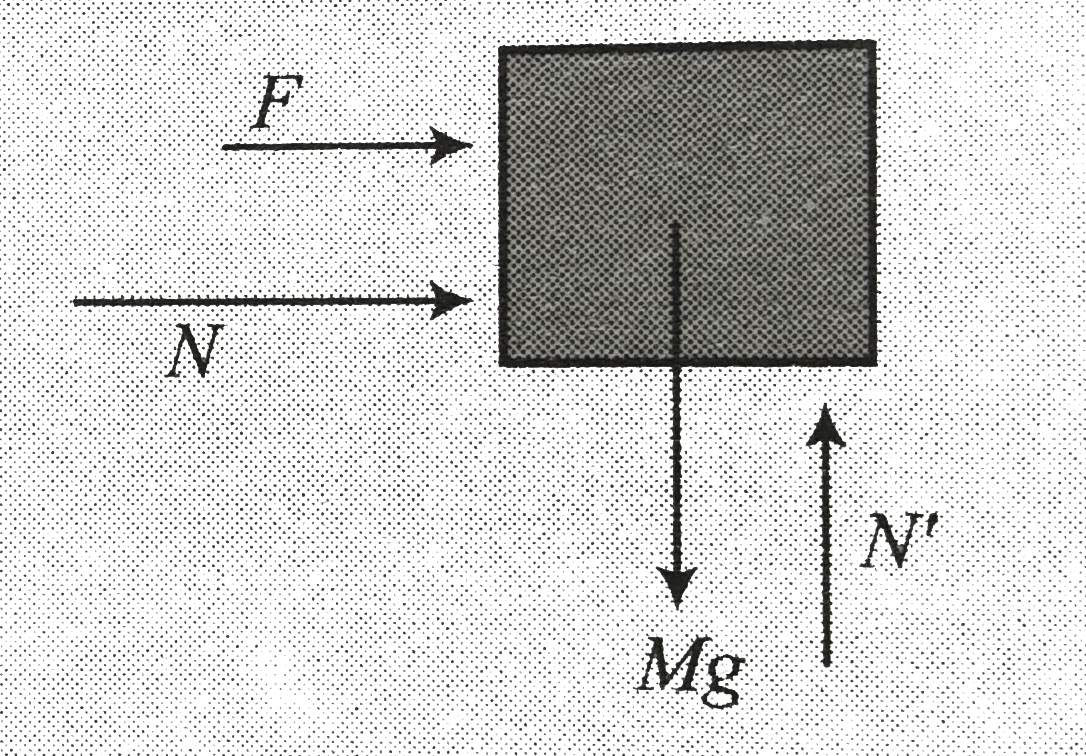 01:26View Solution
01:26View SolutionA mass m is palced on a body of mass M. There is no friction anywhere. Force F is applied on M and it moves with acceleration a. Find the force (along x-axis) on the top body.
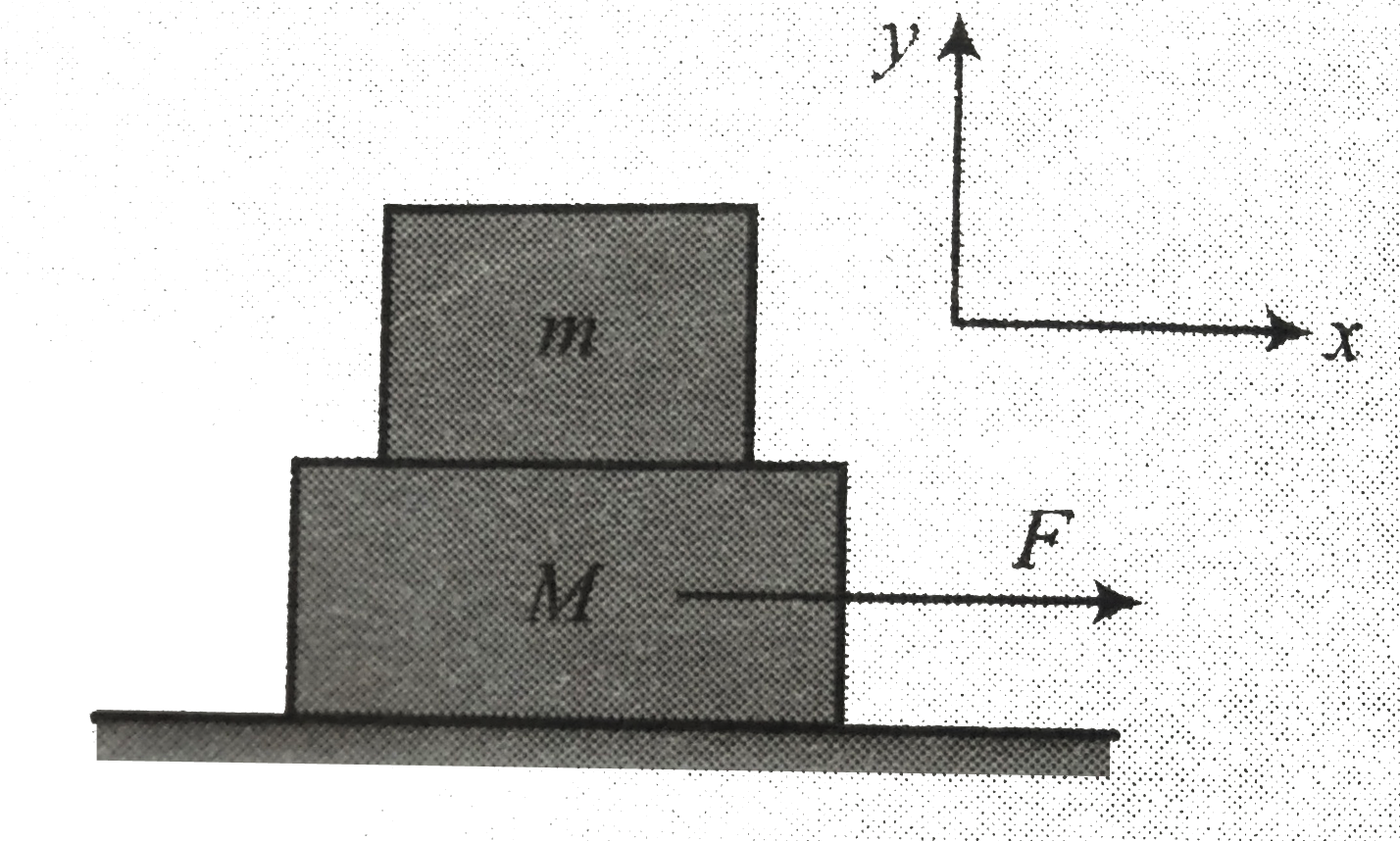 01:36View Solution
01:36View SolutionIn fig., the mass of the man is M. Calculate the mass of the man as registered by weighing machine. Assume weighing machine, man, and wedge all are stationary.
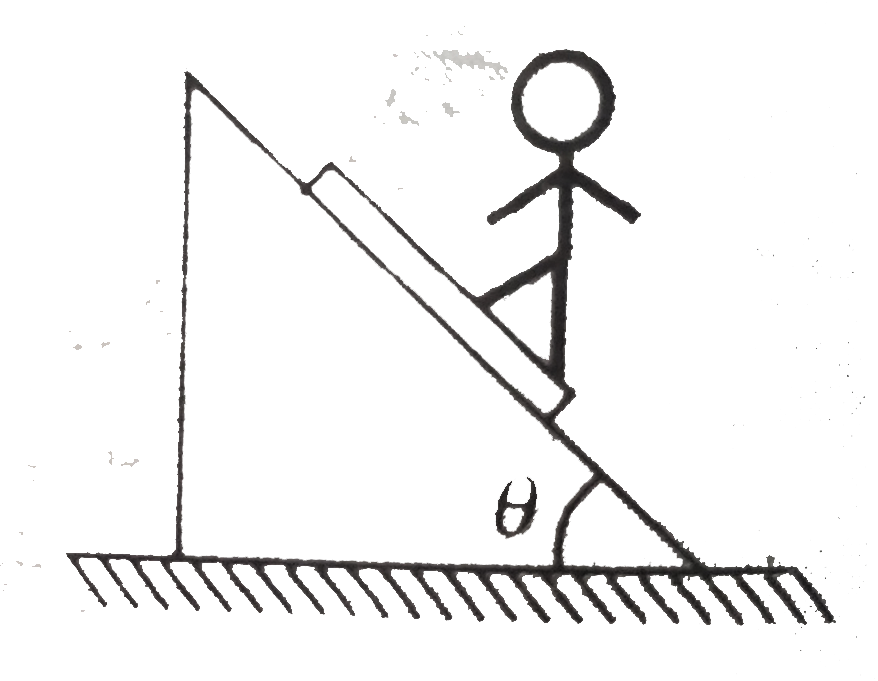 01:20View Solution
01:20View SolutionA small object is suspended at rest from two strings as shown in fig. The magnitude of the force exerted by each string on the object is `10sqrt(2)N`. Find the magnitude of the mass of the object.
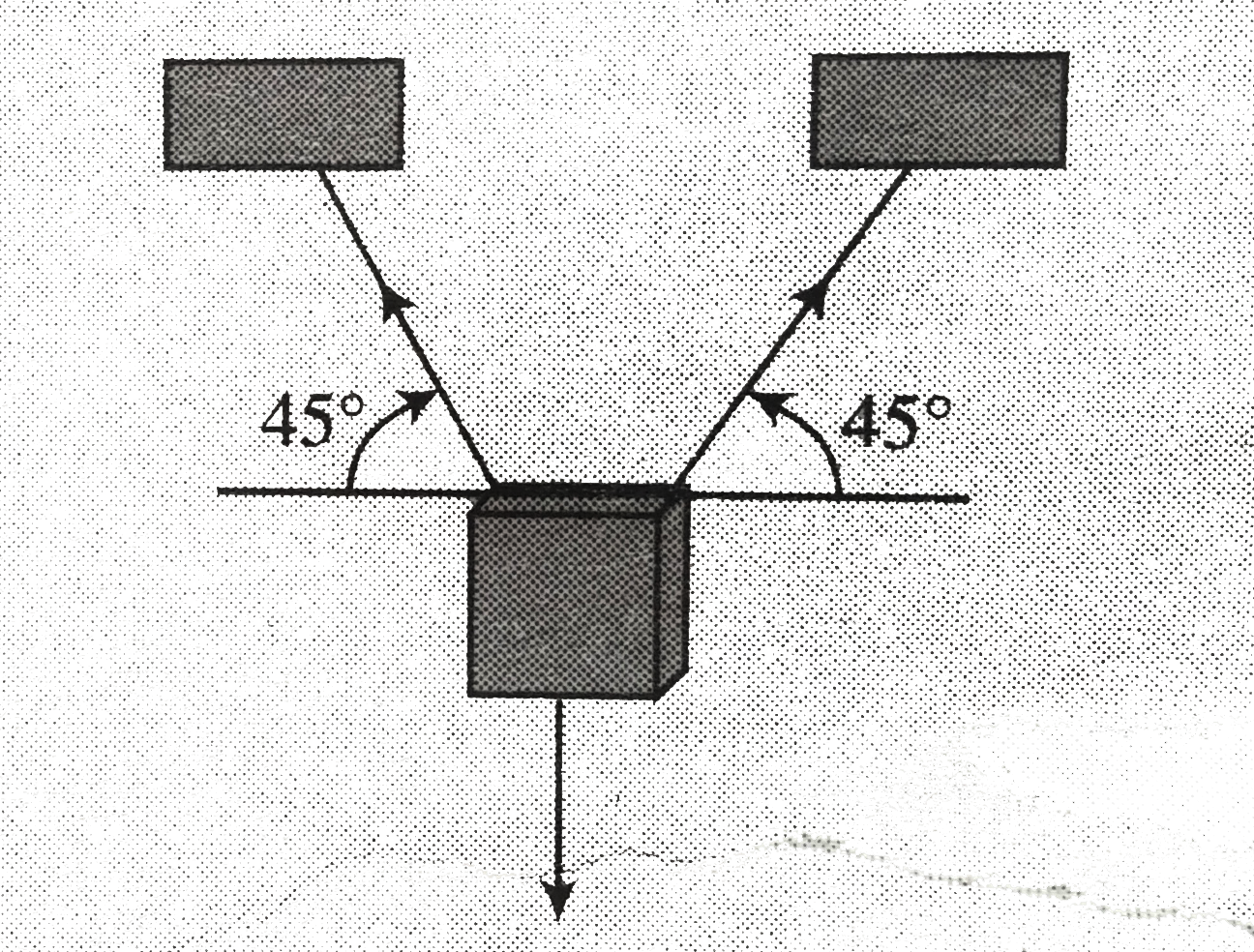 02:12View Solution
02:12View SolutionFigure shows a light platform on which a man of mass M is standing and holding a string passing over a system of ideal pulleys. Another mass m is hanging as shown in fig. Find the force the man has to exert to maintain the equlibrium of system, and find the force exerted by the platform on the man. Also find the ratio of `M//m`.
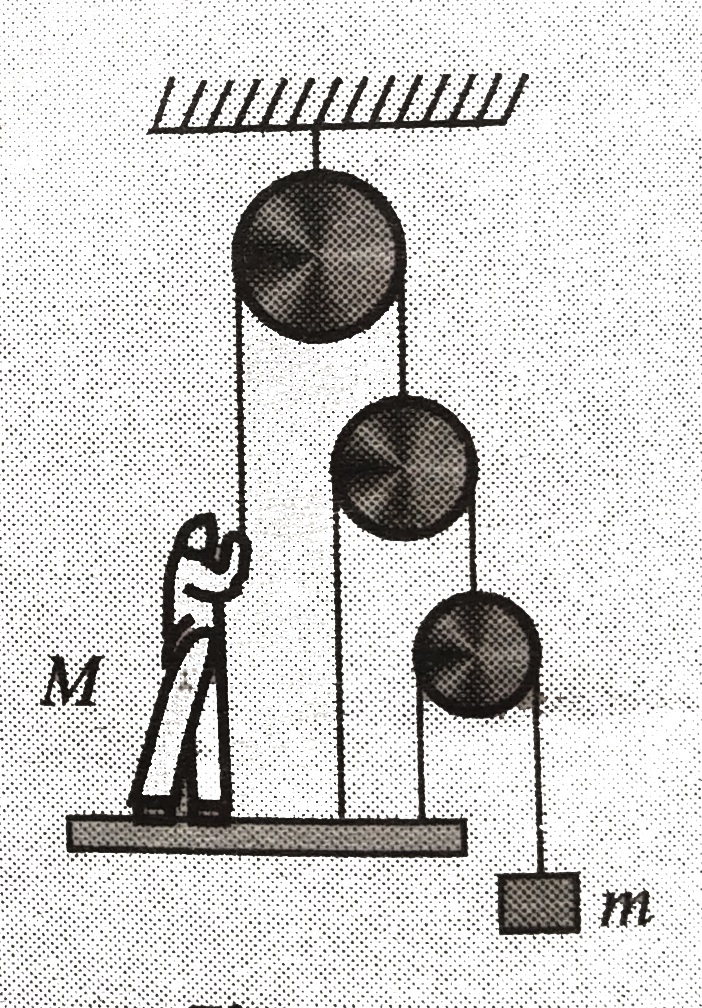 04:45View Solution
04:45View SolutionThe object in fig. weighs 40kg and hangs at rest. Find the tensions in the three cords that hold it.
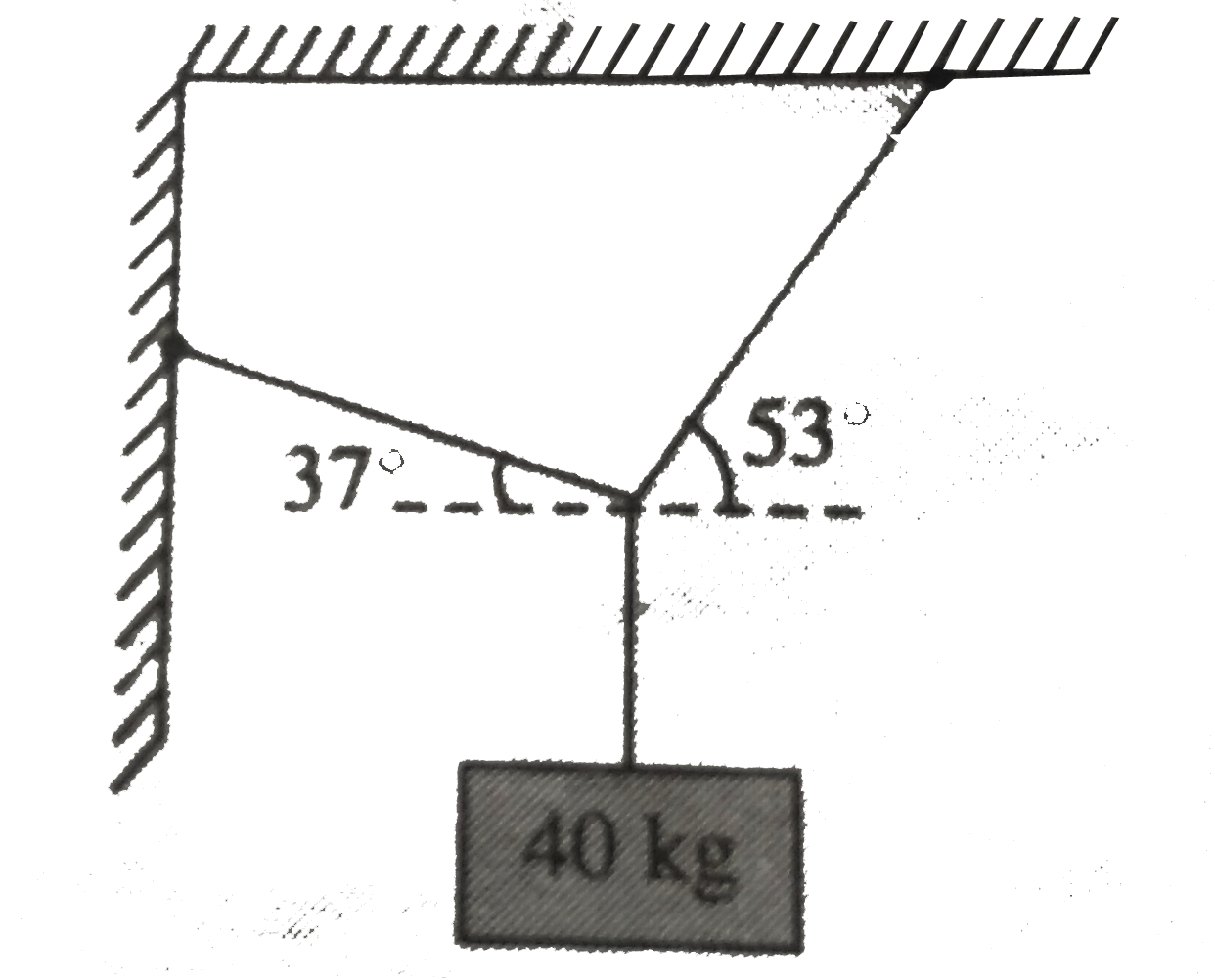 04:19View Solution
04:19View SolutionA block of mass 30 kg is suspended by three string as shown in fig, Find the tension in each string.
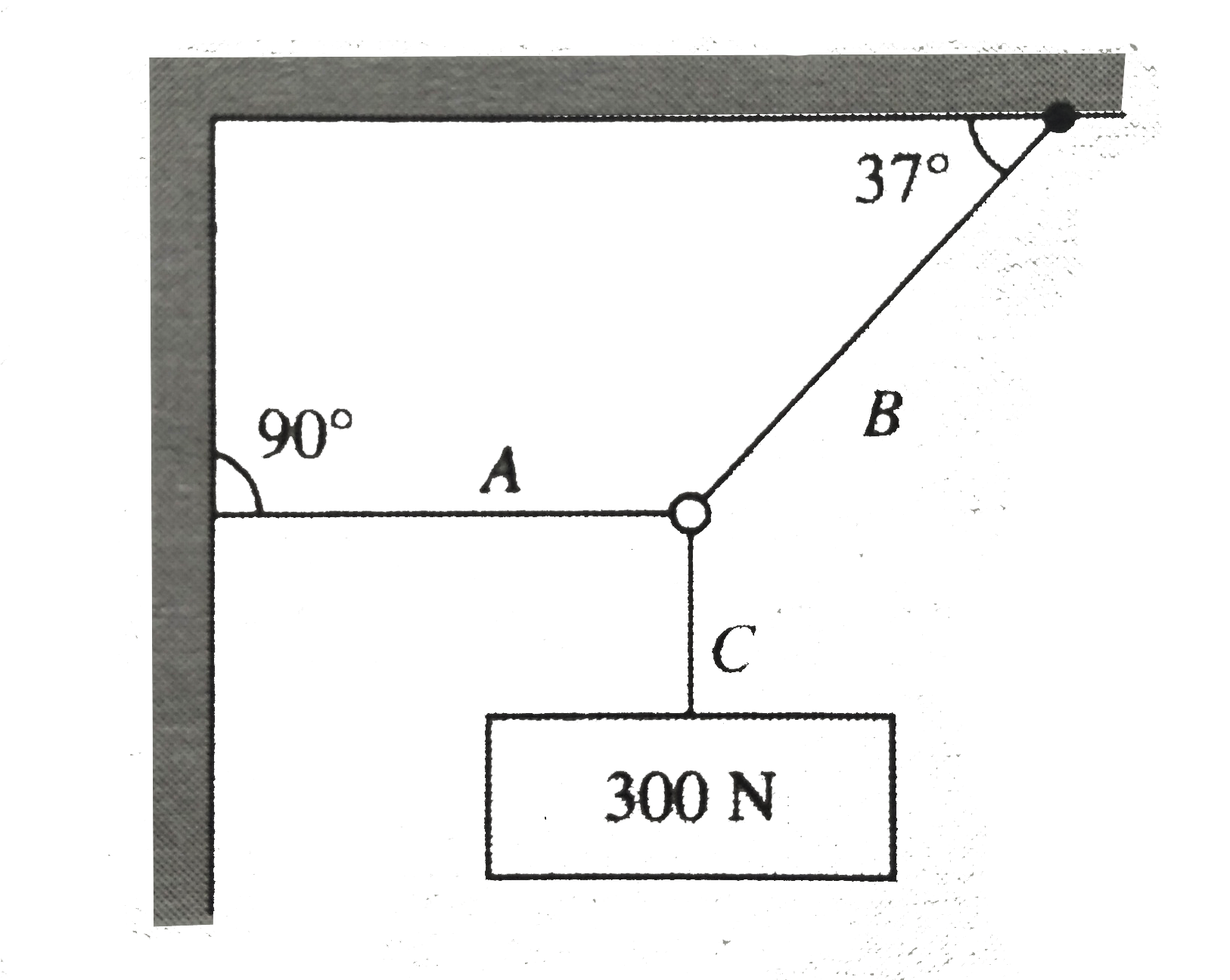 03:42View Solution
03:42View SolutionDetermine tension `T_(4)` (in N) in fig.
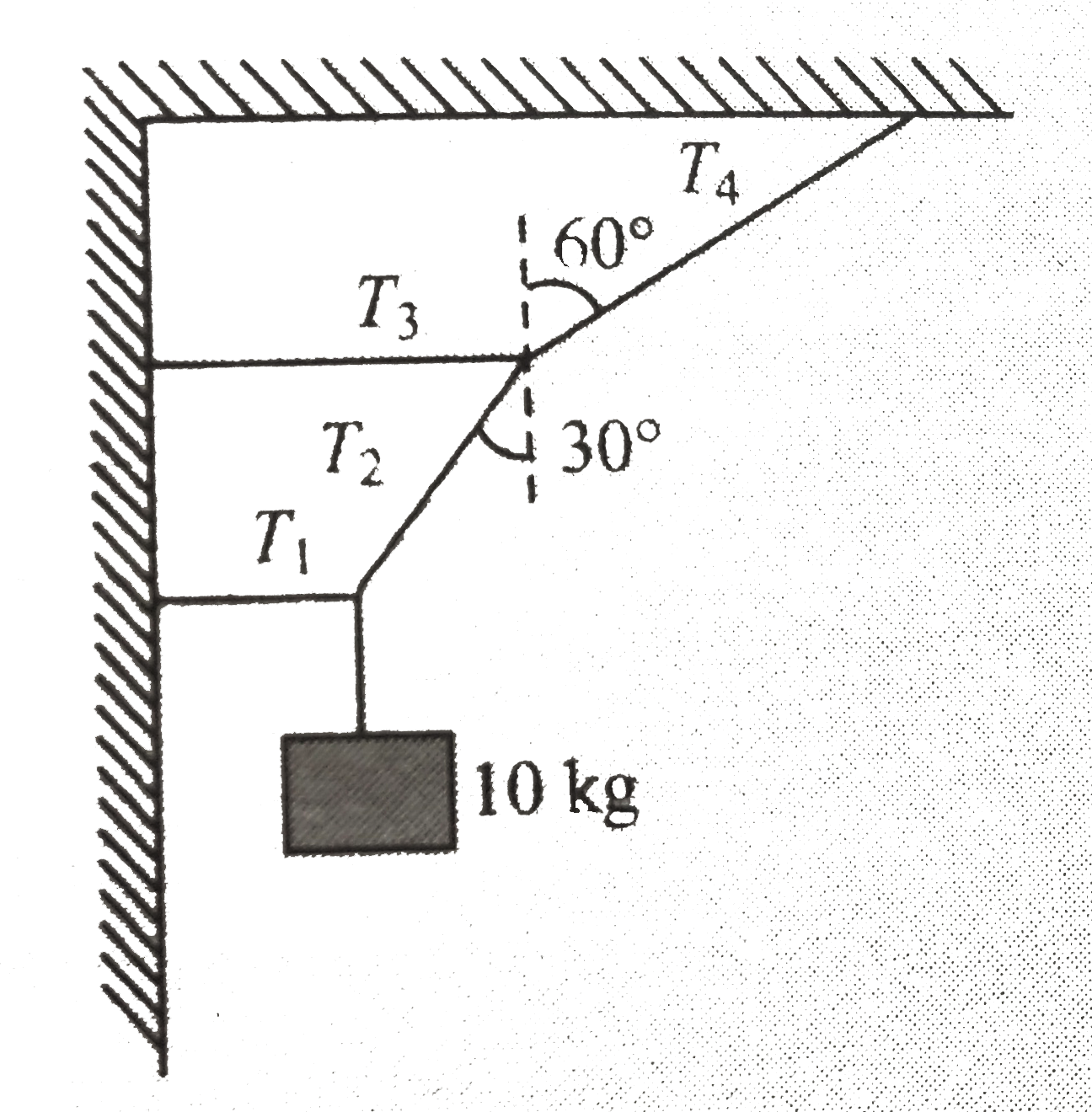 02:42View Solution
02:42View SolutionTwo trolleys A and B are moving with accelerations a and 2a, respectively, in the same direction. To an observer in trolley A. Find the magnitude of the pseudo force acting on a block of mass m on trolley B.
 01:03View Solution
01:03View SolutionA block of mass 25 kg is raised bu a 50kg man in two different ways as shown in fig. what is the action on the floor by the man in the two cases? If the floor yields to a normal force of `700N`, which mode should the man adopt to lift the block without the floor yielding?
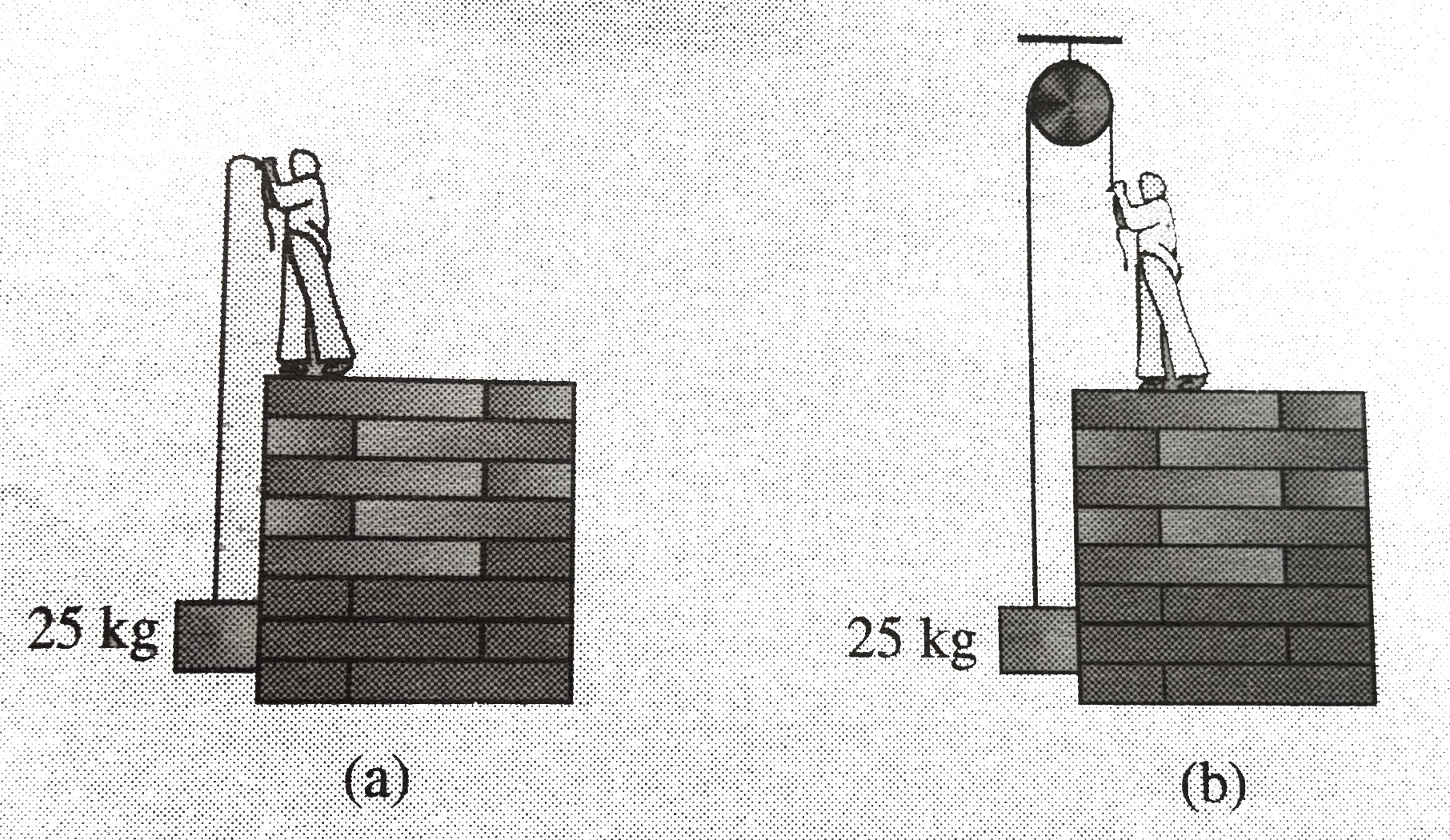 07:35View Solution
07:35View SolutionConsider the system shown in fig. the system os released from rest, find the tension in the cord connected between 1kg and 2 kg blocks.
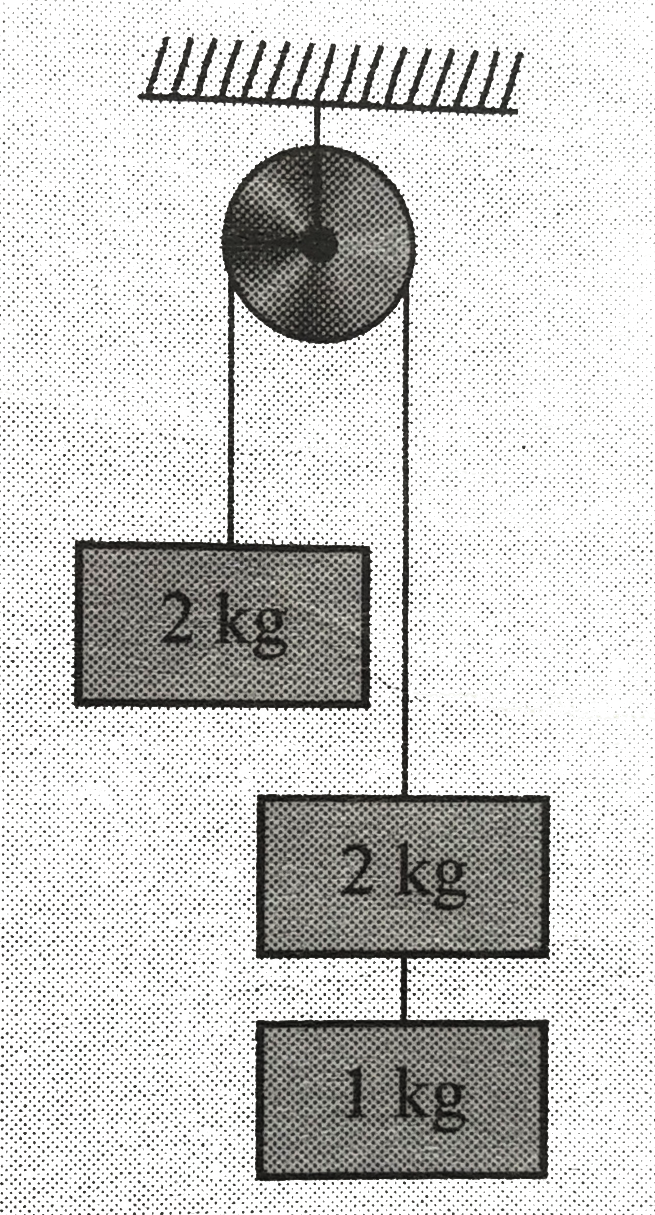 02:32View Solution
02:32View SolutionThe system shown in fig, is released from rest. Calculate the tension in the string and the force exerted by the string on the pulleys, assuming pulleys and strings are massless.
 04:09View Solution
04:09View SolutionFind the acceleration of blocks and tension in the cord in the device shown in fig. Assume no friction anywhere.
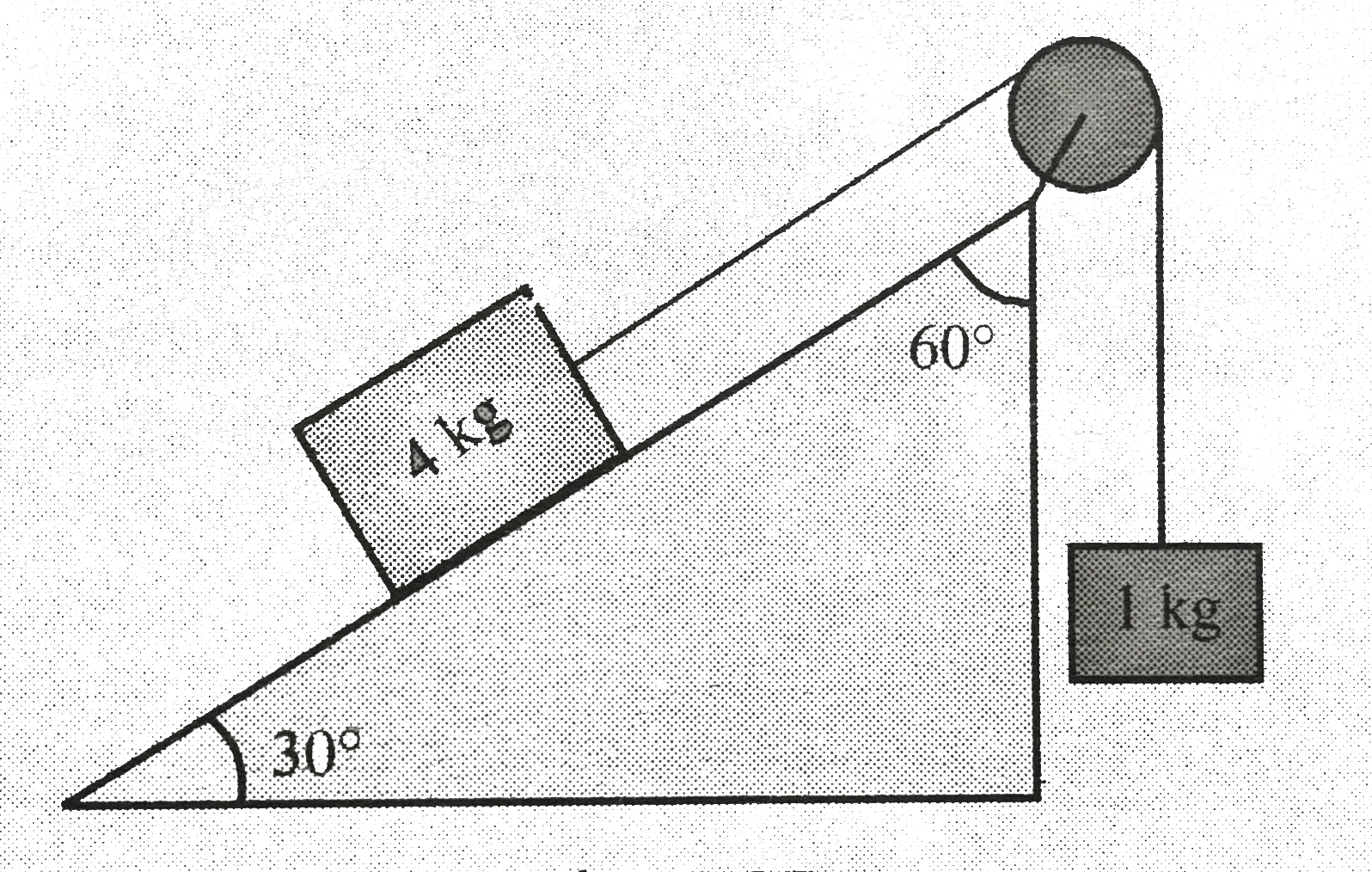 02:22View Solution
02:22View SolutionTwo monkey of masses 10 kg and 8 kg are moving along a verticle rope as shown in fig. the former climbing up with an acceleration of `2 ms^(-2)`, while the later coming down with a uniform velocity of `2 ms^(-2)`. Find the tension in the rope at the fixed support.
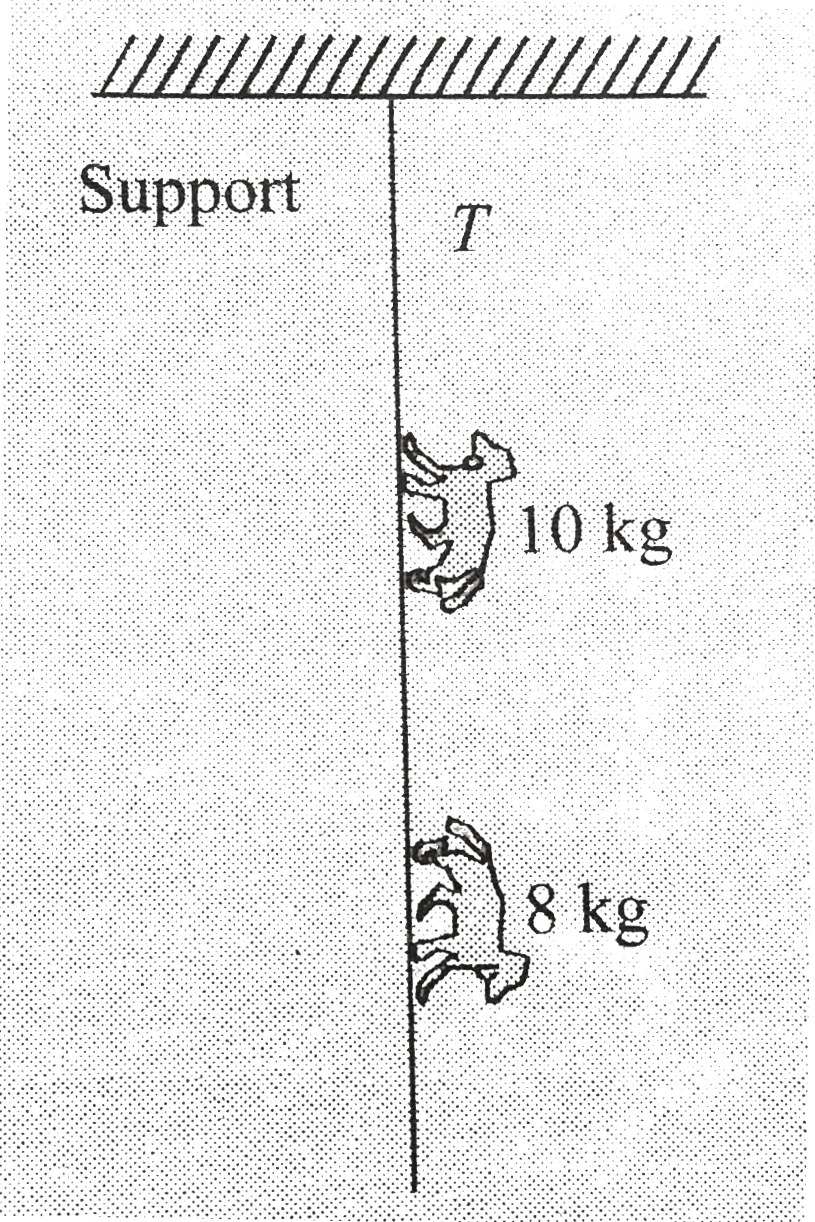 02:05View Solution
02:05View SolutionA homogeneous rod of length L is acted upon by two forces `F_(1) and F_(2)` applied to its ends and directed opposite to each other. With what force F will the rod be stretched at the cross section at a distance l from the end where `F_(1)` is applied?
03:41View SolutionA `20 kg` monkey has a firm hold on a light rope that passes over a frictionless pulley and is attached to a `20 kg` bunch of bananas. The monkey looks upwards , sees the bananas and starts to climb the rope to get them.
(a) As the monkey climbs ,do the bananas move up , move down or remain at rest?
(b) As the monkey climbs ,does the distance between the monkey and the banana decrease, increase or remain contact?
(c) The monkey releases her hold on the rope .What happens to the distance between the monkey and the bananas while she is falling ?
(d) Before reaching the ground , the monkey grabs the rope to stop her fall. What do the bananas do?04:07View SolutionA lift is going up. The total mass of the lift and the passengers is 1500kg. The variation in the speed of the lift is given by the graph.
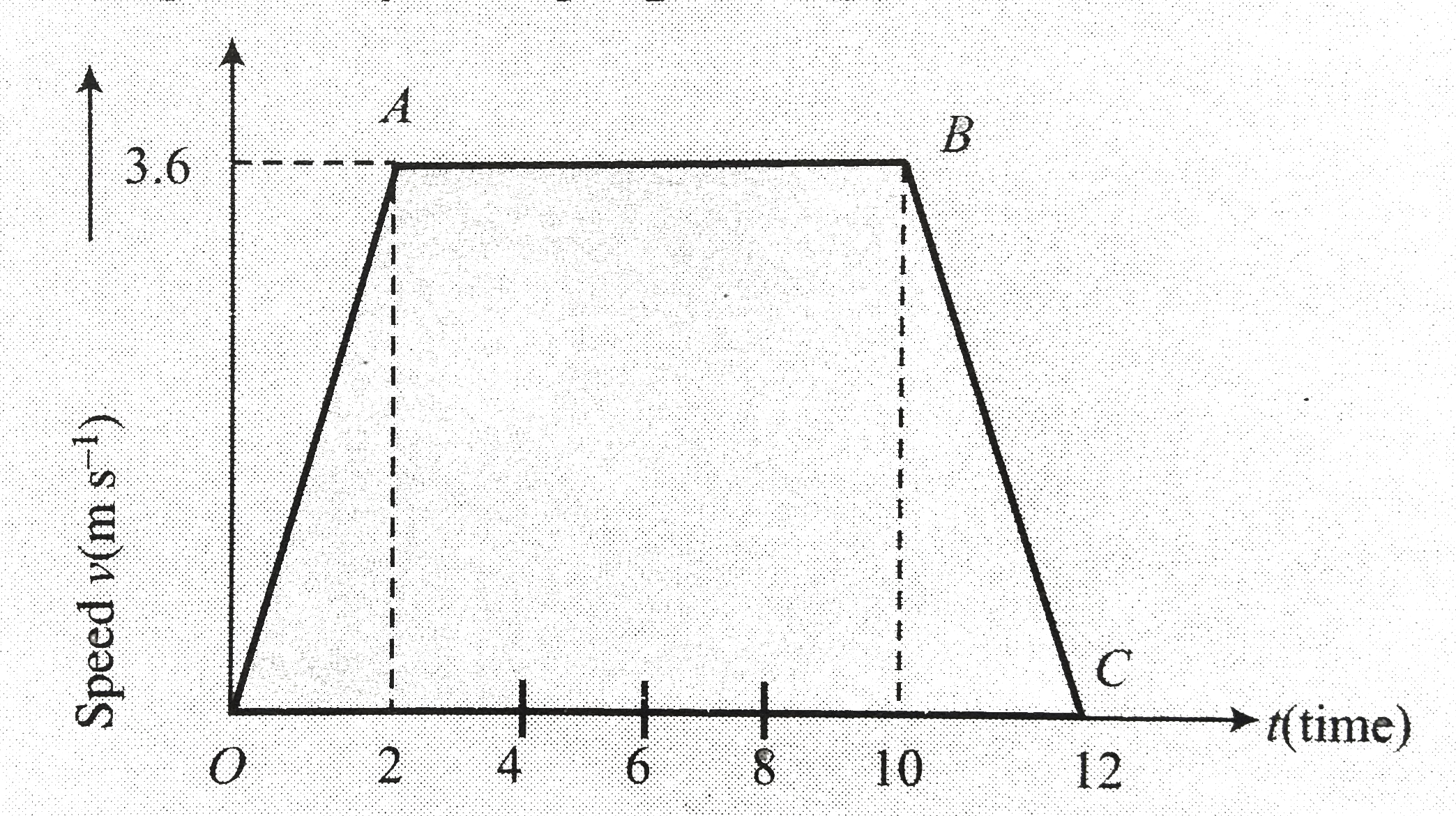
(a) What will be the tension in the rope pulling the lift at time t equal to
(i) 1a, (ii) 6s, (iii)11s ?
(b) What will be the average velocity and the average acceleration during the course of the entire motion?07:08View SolutionA body hangs from a spring balance supported from the roof of an elevator.
(a) If the elevator has an upward acceleration of `2.45 ms^(-2)` and the balance reads 50N, what is the true weight of the body?
(b) Under what circumstances will the balance read 30N?
(c) What will be the balance reading if the elevator, cable breaks?04:49View SolutionIn fig. the block of mass M is at rest on the floor . At what acceleration with which should a boy of mass m climb along the rope of negligible mass so as to lift the block from the floor?
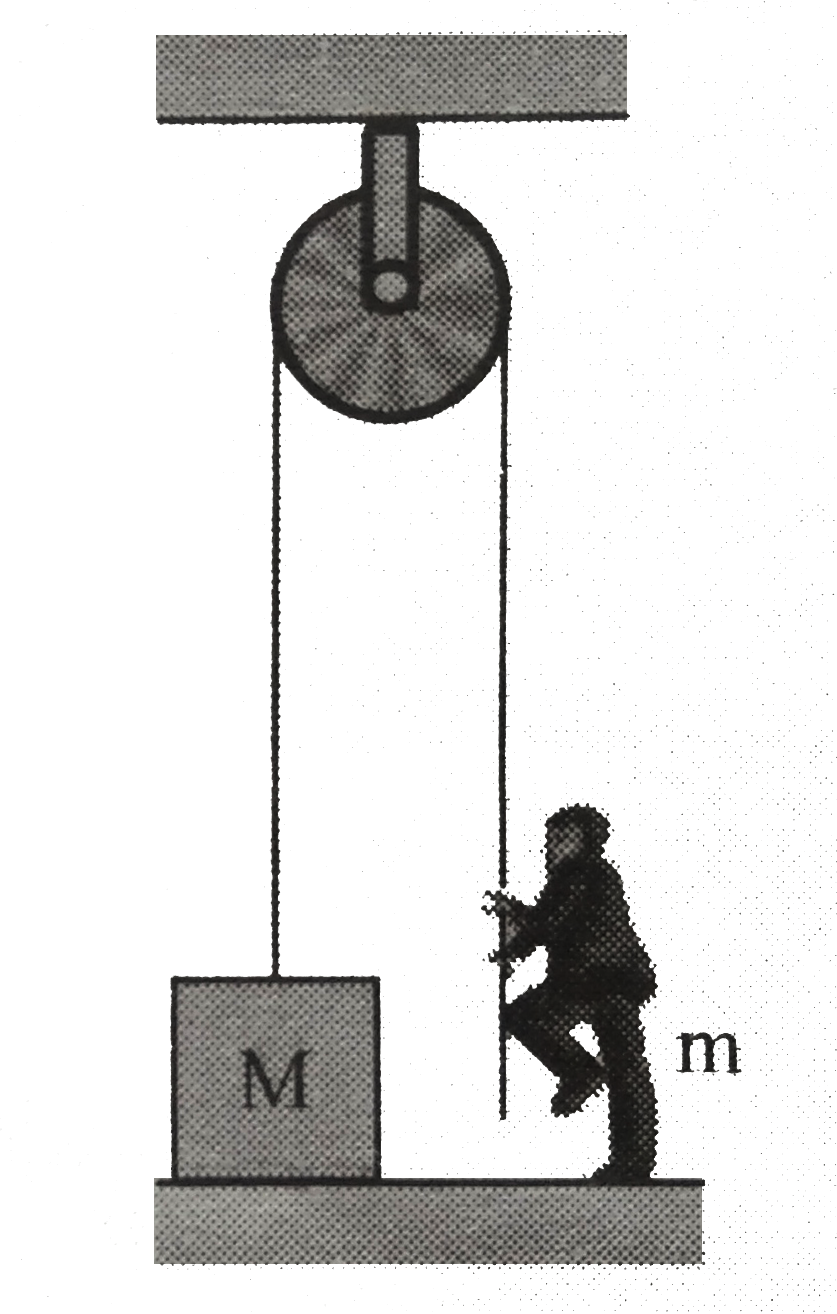 02:45View Solution
02:45View SolutionWhat should be the minimum force P to be applied to the string so that block of mass m just begins to move up the frictionless plane?
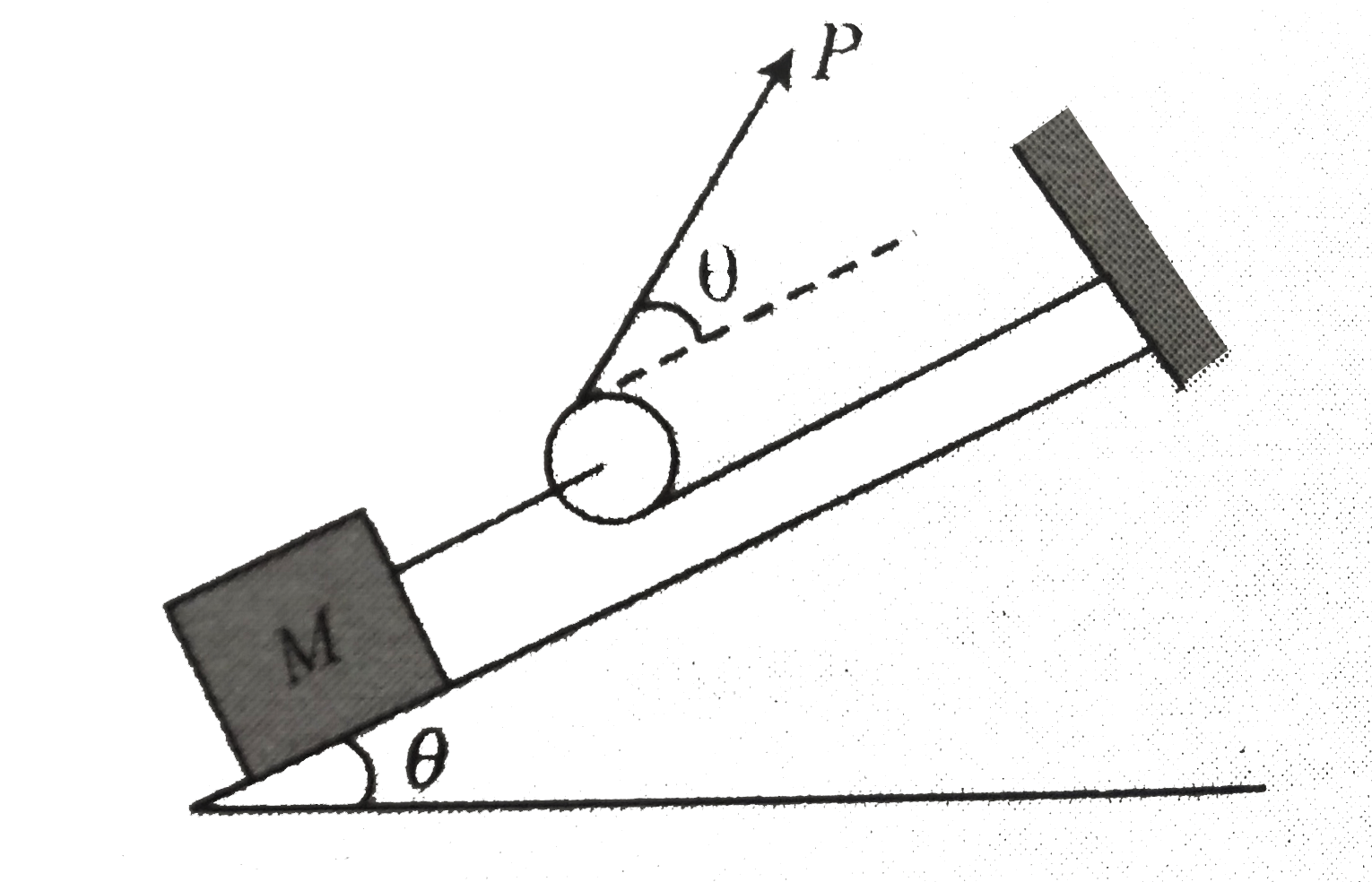 03:41View Solution
03:41View SolutionThree blocks `m_(1), m_(2)`, and `m_(3)` are arranged as shown in fig. if `m_(2)=5 kg` and `m_(3)=8kg`, at what value of `m_(1)` will `8kg` mass be at rest?
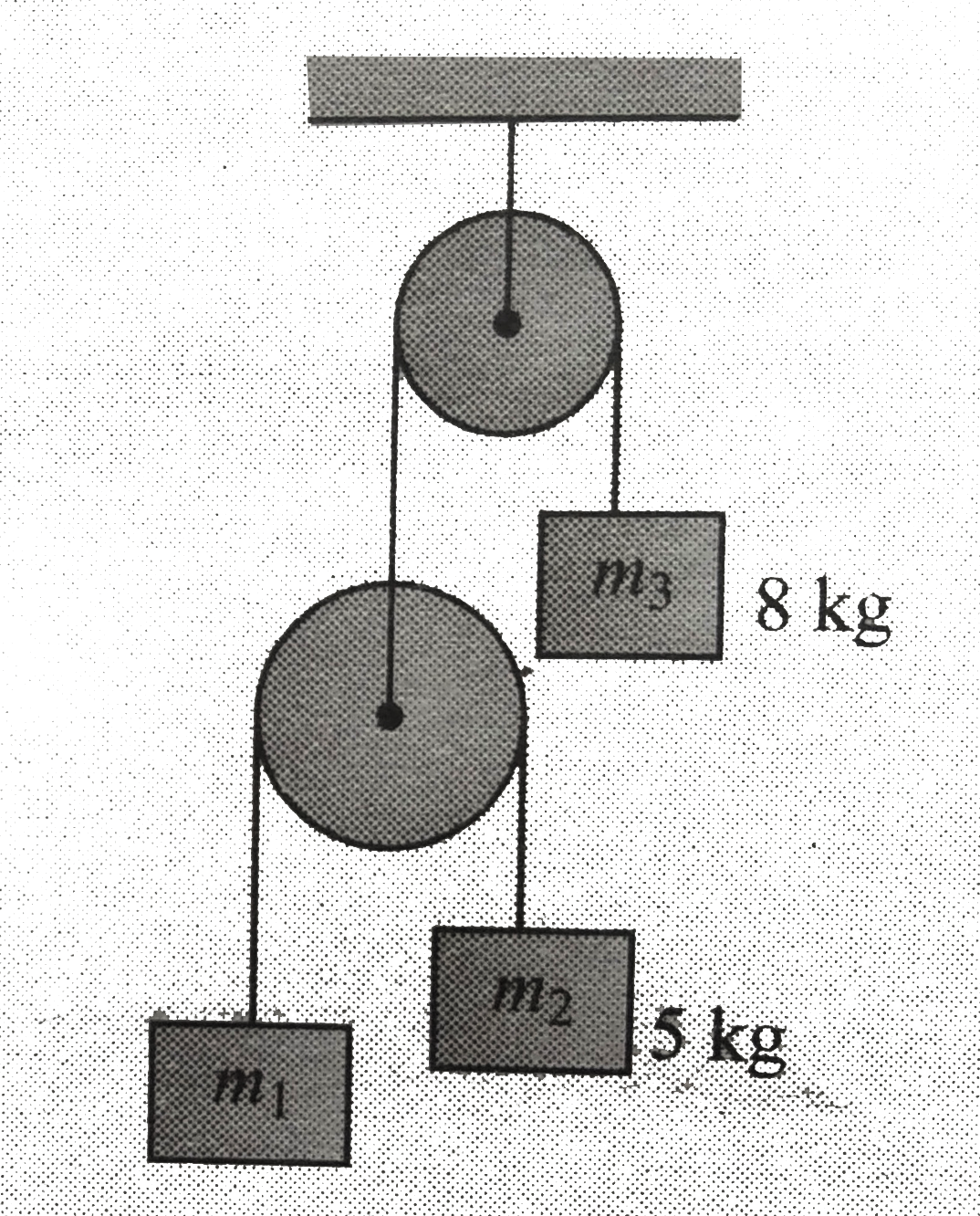 03:09View Solution
03:09View SolutionA block of mass m is placed on an inclined plane. With what acceleration A towards right should the system move on a horizontal surface so that m does not slide on the surface of inclined plane? Also calculate the force supplied by wedge on the block. Assume all surfaces are smooth.
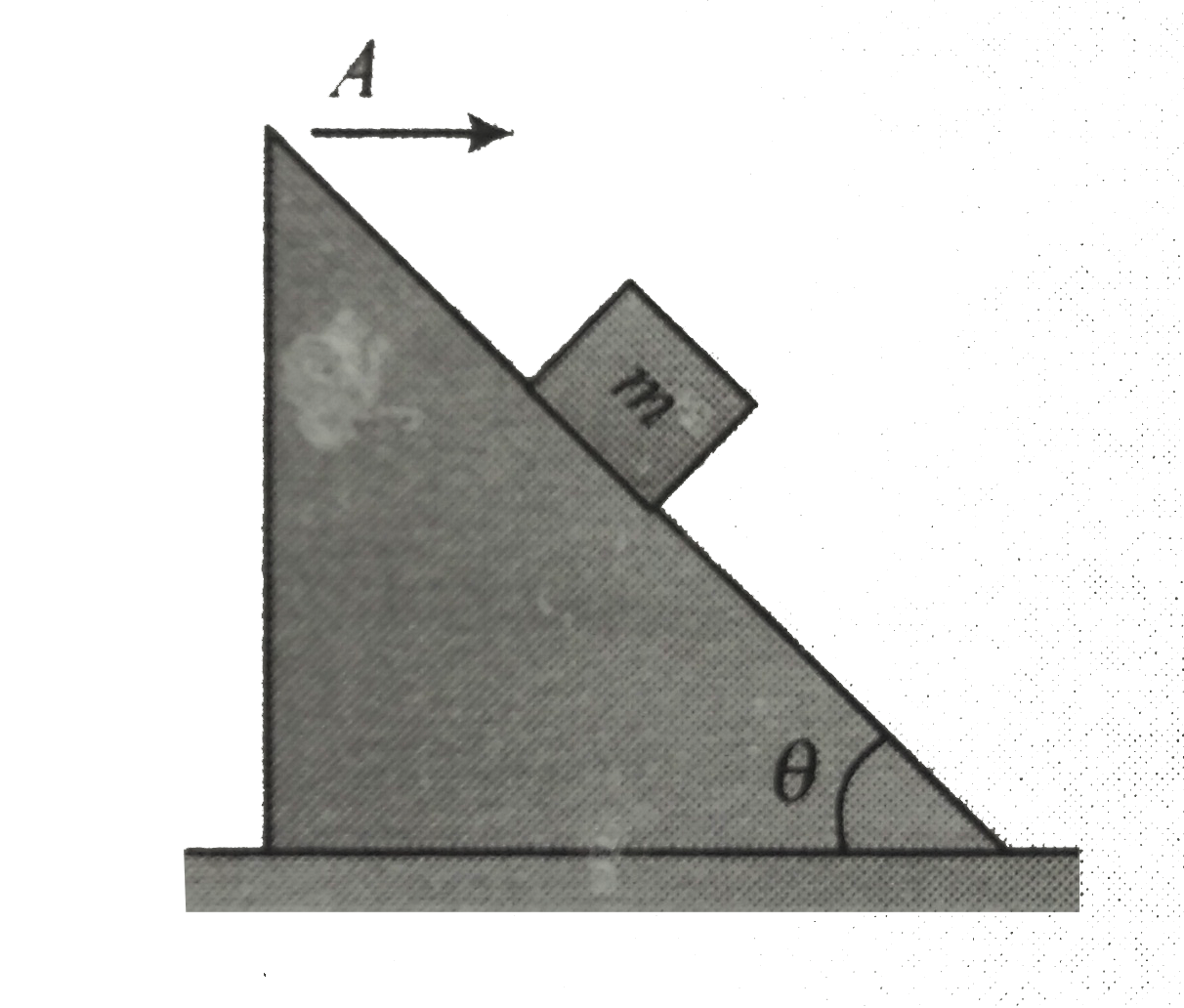 04:29View Solution
04:29View SolutionMan A of mass 60 kg pushes the other man B of mass 75 kg due to which man B starts moving with acceleration `3ms^(-2)`. Calculate the acceleration of man A at that instant.
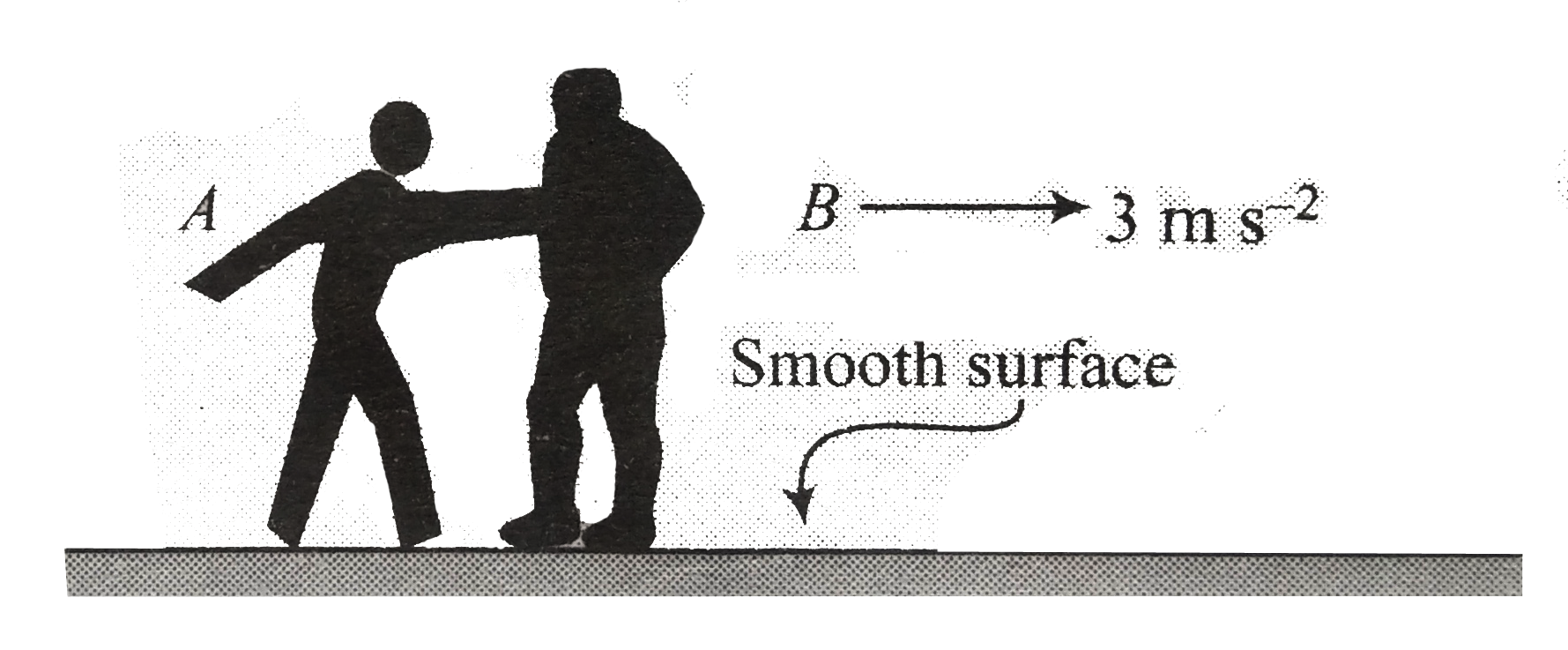 01:54View Solution
01:54View SolutionSeven identical dominoes (i.., blocks) each of mass m=1kg are to be stacked in three columns and pushed across a frictionless ice rink by a horizontal 10-N force.Assume dominoes do not slip w.r.t. each other. How many dominoes should be in each column, with a minimum of one, (a) to maximize the acceleration of the dominoes, (b) to maximize the force on column C due to column B, (c ) to maximize the net force on column B due to column A and C, and (d) to maximize the force on column B due to column A?
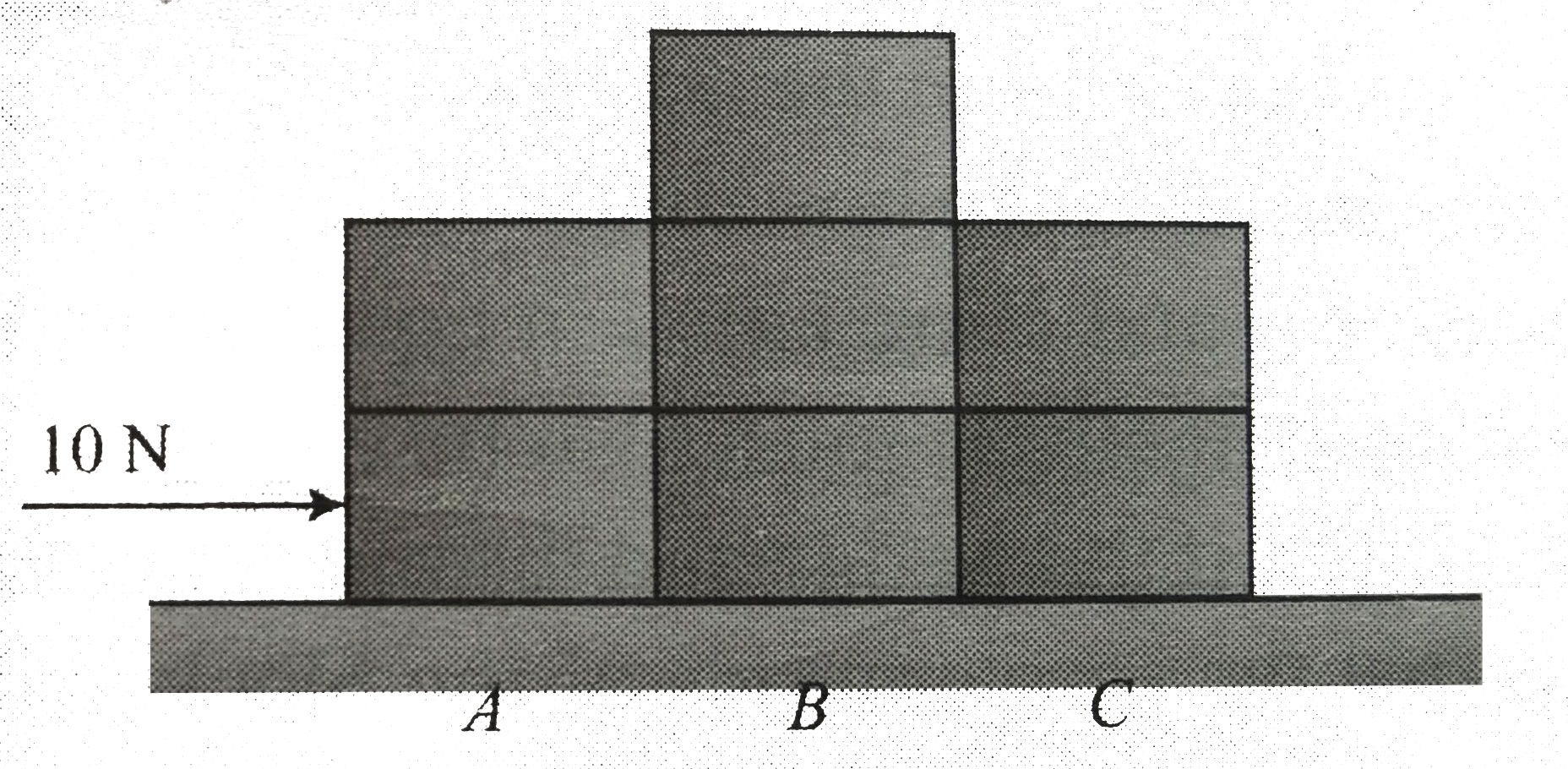 04:03View Solution
04:03View SolutionIn fig. the man and the platform together weight 950N. The pulley can be treated as frictionless. Determine how hard the man has to pull on the rope to lift himself upward above the ground with constant velocity. If the weight of man is 550 N, what is the normal reaction between them?
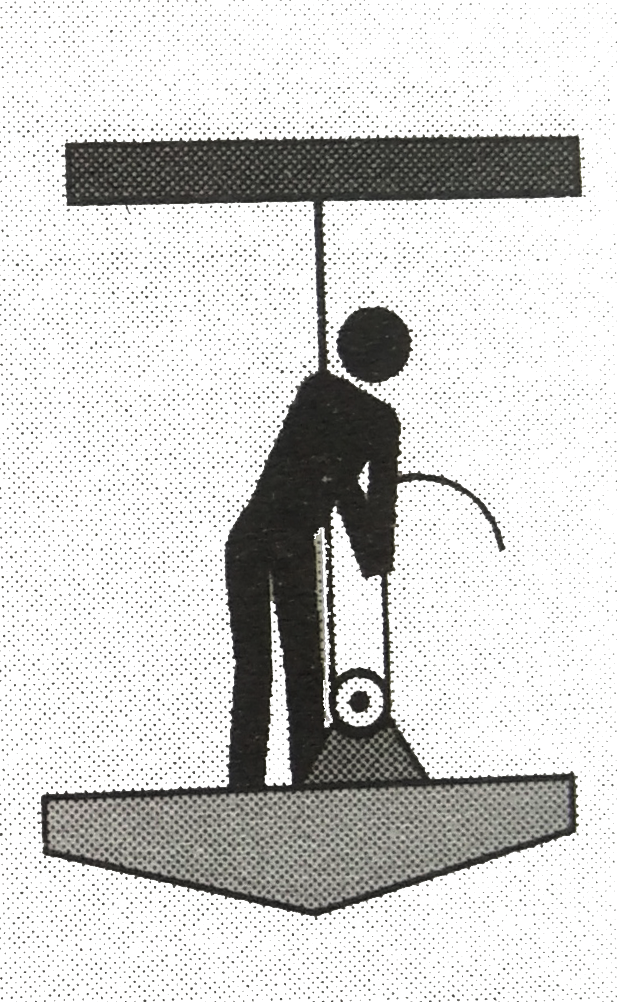 02:23View Solution
02:23View SolutionThe masses of blocks A,B,and C are 1kg, 2kg,and 0.5kg, respectively. All surfaces are smooth. If force `F=50N` acts as shown in fig. at the instant shown, find the force which A exerts on B and the acceleration of C.
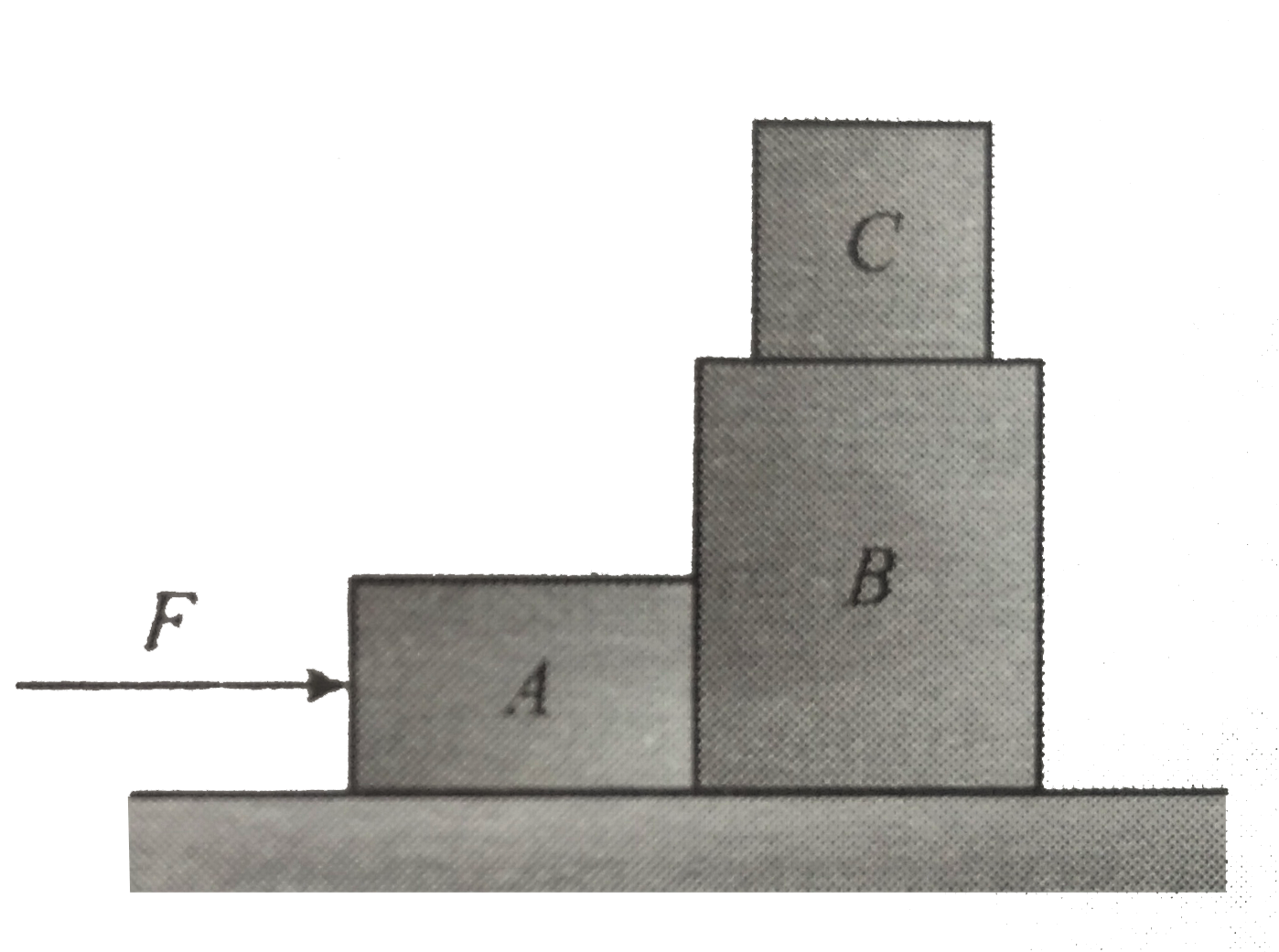 02:16View Solution
02:16View SolutionConsider the two configurations shown in equlibrium. Find the ratio of `T_(A)//T_(B)`. (Ignore the mass of the rope and the pulley).
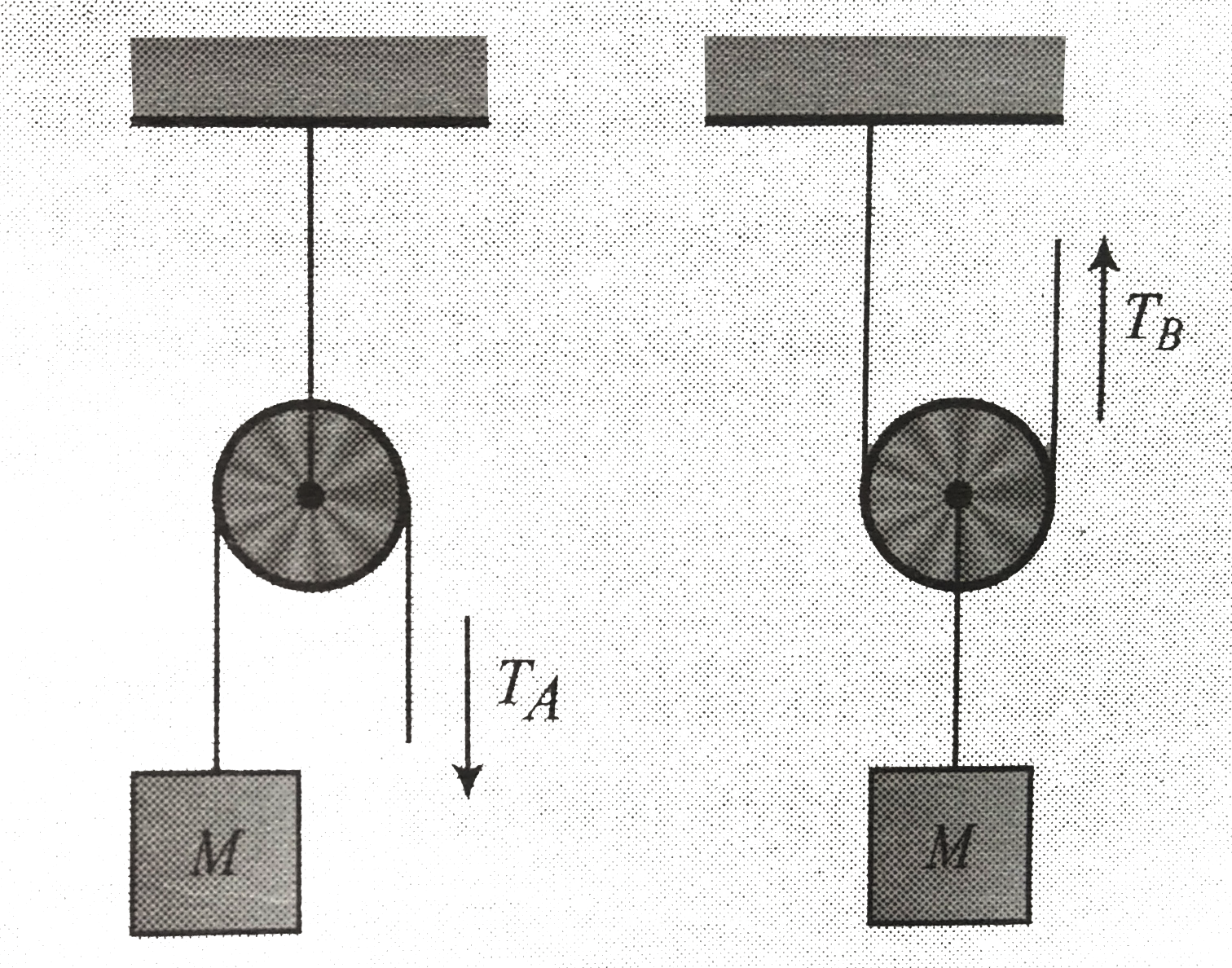 01:52View Solution
01:52View SolutionA locomotive accelerates a train of identical railway carts. The carts are numbered consecutively with the cart next to locomotive having the number 1. The tension in the connection between the carts with numbers 4 and 5 is three times begger than the tension in the connection between the carts with numbers 14 and 15. What is the number of the last cart? there is no resistance to the train's motion.
View SolutionA uniform string of length 10 m and mass 20 kg lies on a smooth friction-less inclined plane. A force of 200N is applied as shown in the figure.
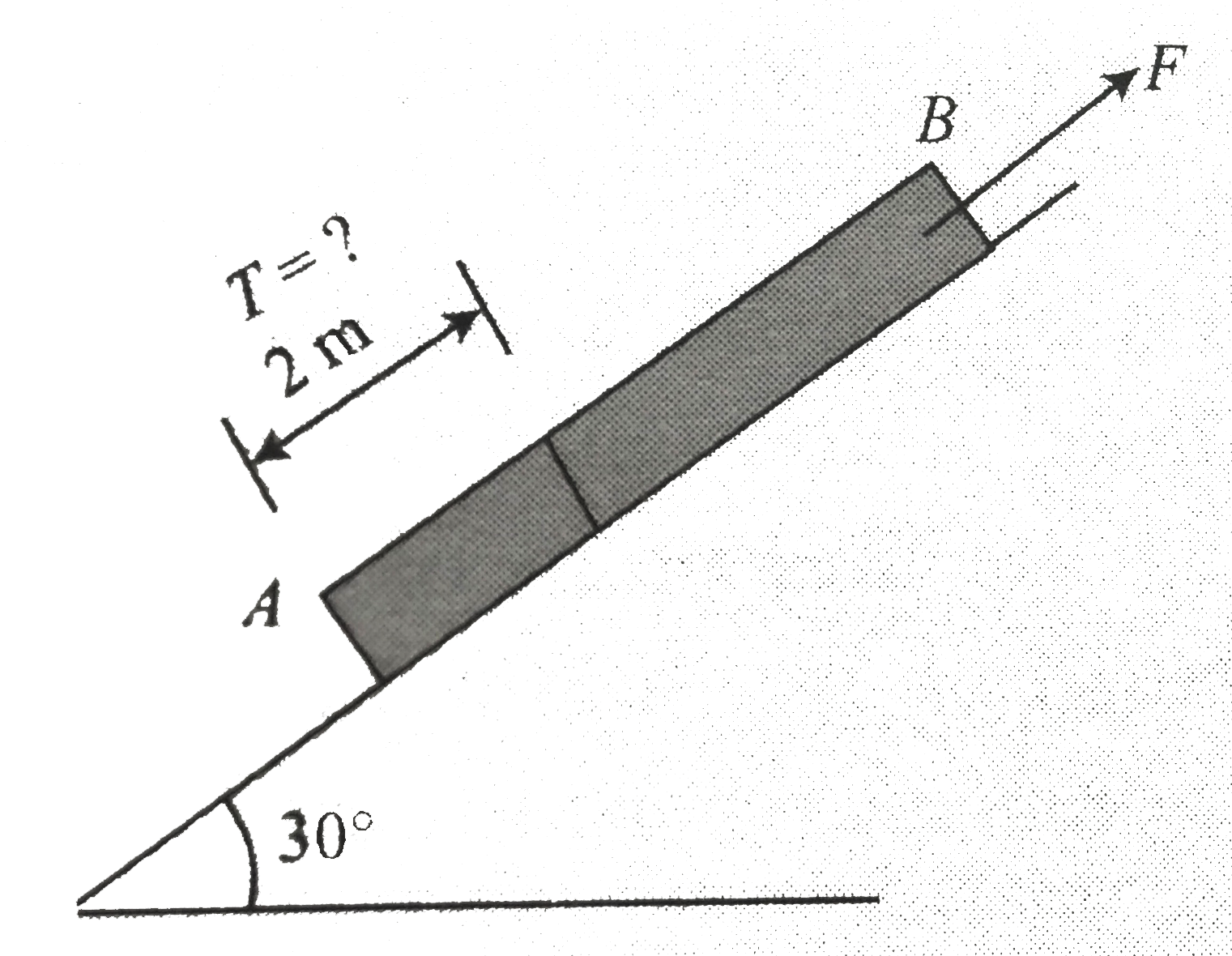
(a) Find the acceleration of the string.
(b) Find the tension in the string at 2m from end A.04:26View SolutionA man of mass `m` stands on a platform of equal mass `m` and pulls himself by two ropes passing over pulleys as shown in figure.If he pulls each rope with a force equal to half his weight ,his upwards acceleration would be
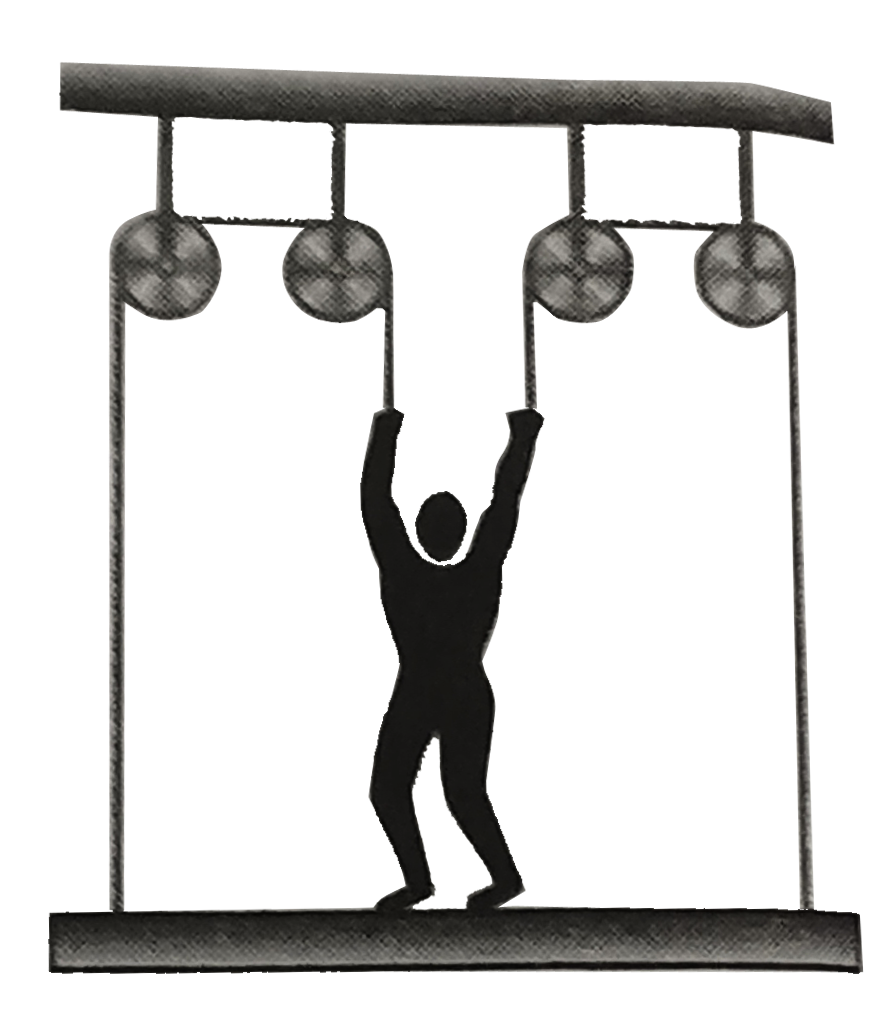 02:20View Solution
02:20View SolutionA small cubical block is placed on a triangular block M so that they touch each other along a smooth inclined contact plane as shown in fig. The inclined surface makes an angle `theta` with the horizontal. A force F is to be appled on the block m in horizontal direction so that the two bodies move without slipping against each other assuming the floor to be smooth also. determine the
(a) normal force with which m and M press against each other.
(b) magnitude of external force F. Express your answer in terms of m, `M, theta`,and g.
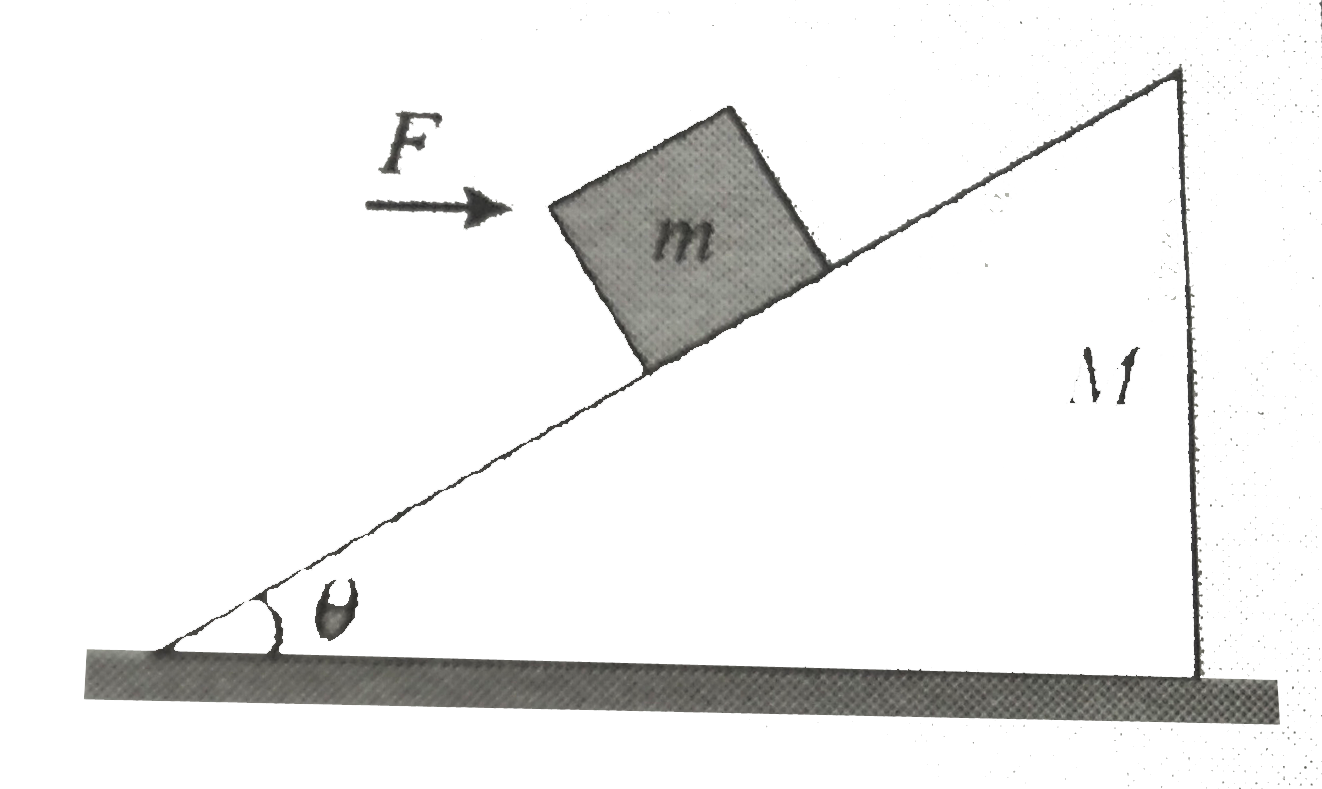 03:36View Solution
03:36View SolutionA block of mass 1kg is kept on the tilted floor of a lift moving down with `3ms^(-1)`. If the block is released from rest as shown, what will be the time taken by block to reach the bottom? What is the normal reaction on the block during the motion?
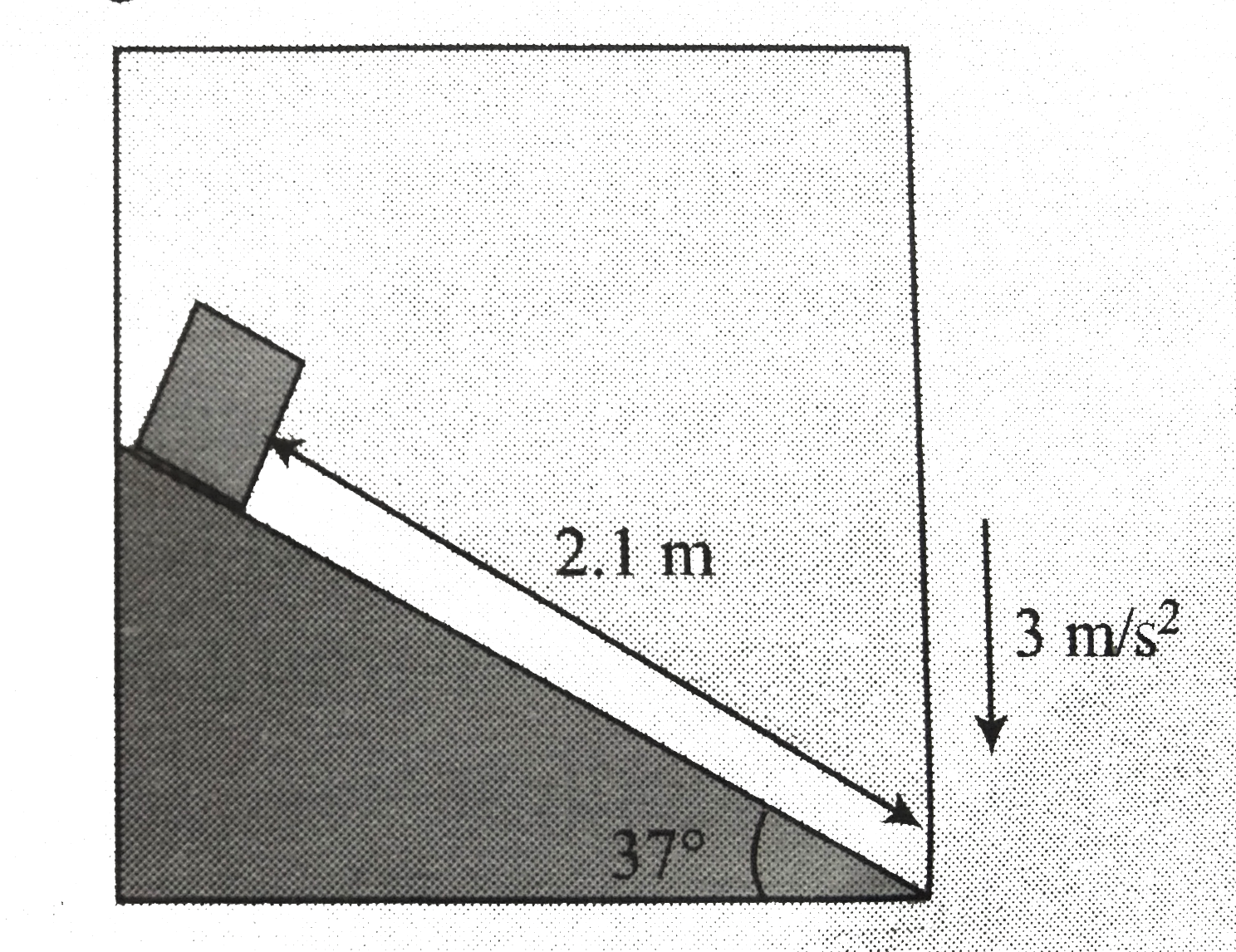 05:06View Solution
05:06View SolutionTwo particles of mass m each are tied at the ends of a light string of length 2a. The whole system is kept on a frictionless horizontal surface with the string held tight so that each mass is at a distance `a` from the centre P (as shown in the figure). Now, the mid-point of the string is pulled vertically upwards with a small but constant force F. As a result, the particles move towards each other on the surface. The magnitude of acceleration, when the separation between them becomes 2x, is
 06:26View Solution
06:26View SolutionA block of weight W is placed on a wedge and arranged as shown in fig. find the force F needed to hold the cart equilibrium if there is no friction.
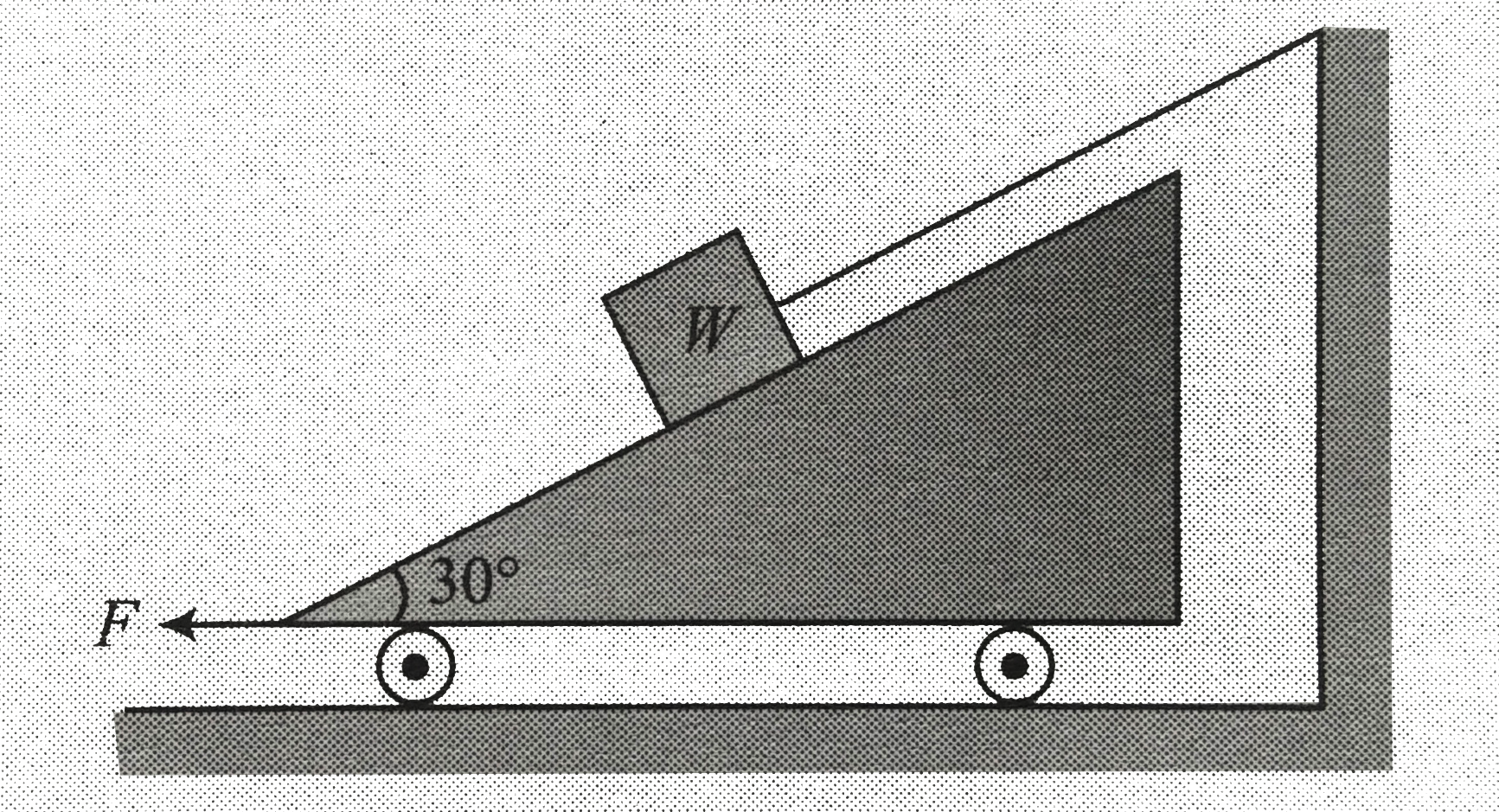 02:17View Solution
02:17View SolutionA steel ball is suspended from the ceiling of an acceleration carriage by means of two cords A and B. Determine the acceleration a of the carriage which will cause the tension in A to be twice that in B.
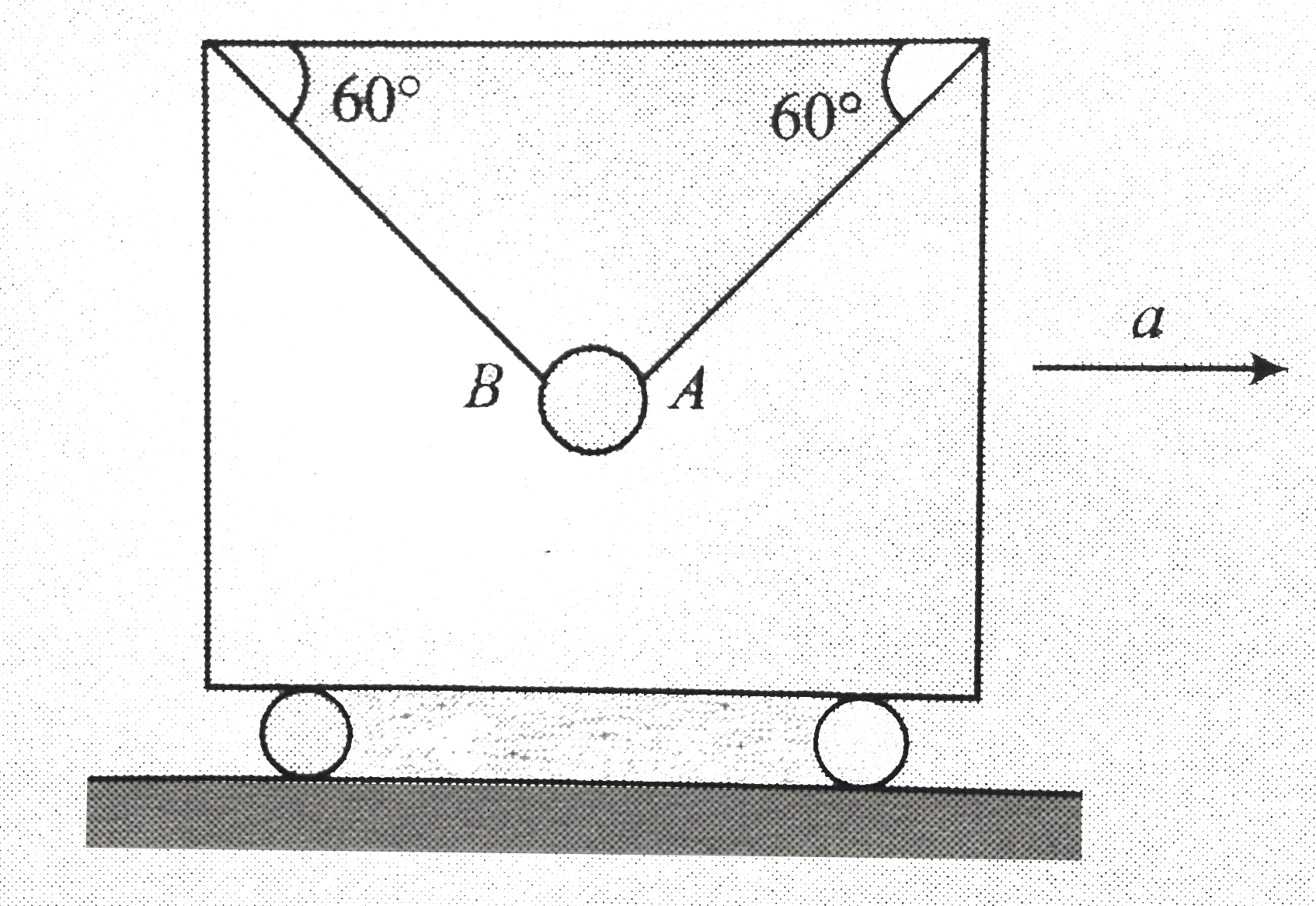 03:21View Solution
03:21View Solution
Exercise 6.2 questions and complete solutions for chapter NEWTON'S LAWS OF MOTION 1 of CENGAGE PHYSICS (HINGLISH) of Class 11
